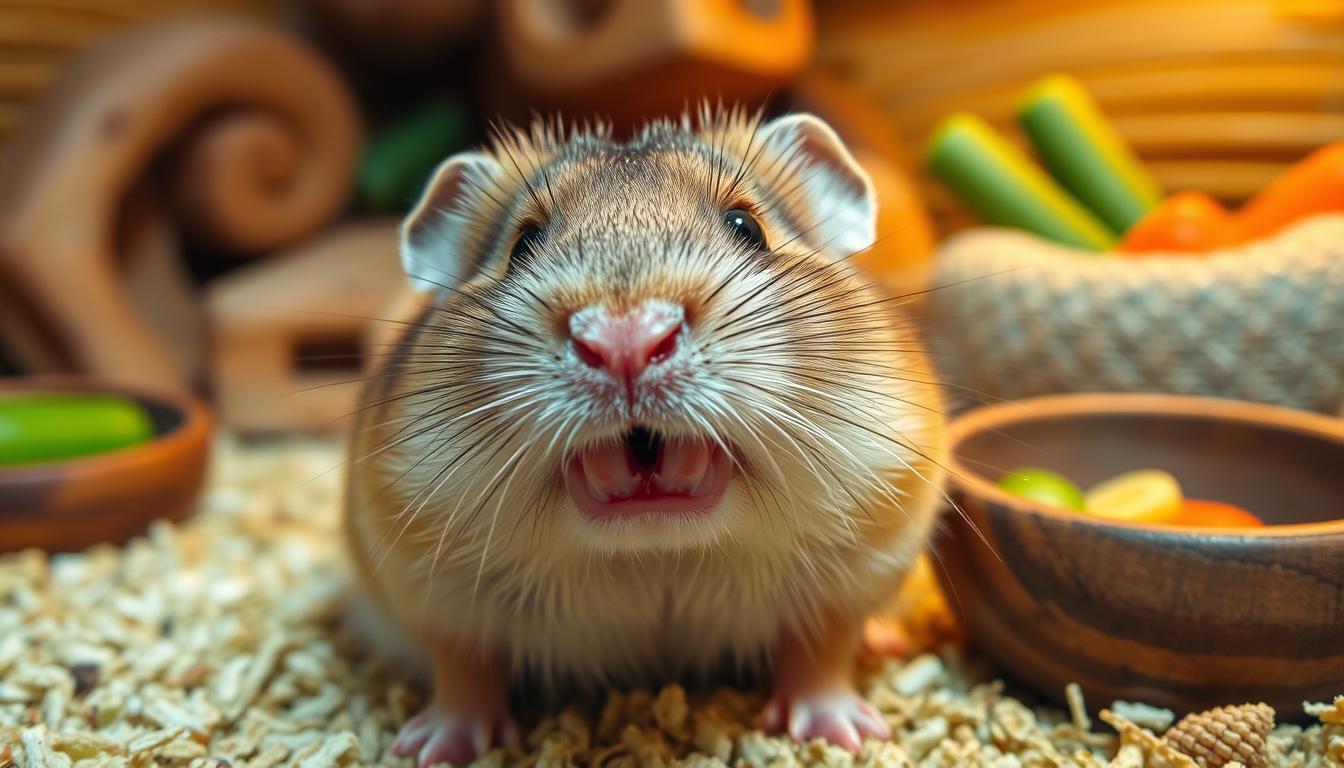Hamsters, those fluffy little bundles of energy, are beloved pets known for their adorable faces and quirky personalities. But beneath those twitching noses and constantly moving whiskers lies a fascinating dental world! Understanding your hamster’s teeth is crucial for their health and happiness. After all, good dental hygiene is just as important for our tiny companions as it is for ourselves. Let’s dive into the world of hamster chompers and uncover the secrets behind their tiny, but mighty, teeth. Prepare to be amazed by the continuous growth, the constant gnawing, and the importance of providing the right care to keep those pearly whites (or rather, yellowish ones!) in tip-top shape.
Hamster Chompers: A Tiny but Mighty Mystery?
Hamster teeth, though small, are a vital part of their anatomy and overall well-being. These little chompers aren’t just for show; they play a crucial role in how hamsters eat, explore, and interact with their environment. Their teeth are constantly growing, requiring them to gnaw and chew on various materials to keep them at a manageable length. This constant grinding action is essential for preventing overgrowth and ensuring they can properly consume their food.
The structure and function of hamster teeth are quite different from our own. They lack the enamel on the back of their incisors, leading to a self-sharpening mechanism as they grind against each other. This unique adaptation allows them to efficiently process a variety of foods, from seeds and grains to vegetables and fruits. Understanding the intricacies of their dental system is key to providing appropriate care and preventing potential health issues.
While hamsters might seem small and fragile, their teeth are surprisingly resilient. However, they are also susceptible to various dental problems if not properly cared for. Overgrown teeth, malocclusion (misalignment), and abscesses are common issues that can affect their ability to eat and cause significant discomfort. Regular monitoring and appropriate dental care are essential for maintaining their oral health.
The mystery surrounding hamster teeth often stems from their small size and the difficulty in examining them closely. Many owners may not be aware of the specific dental needs of their furry friends, leading to potential neglect and health complications. By educating ourselves about hamster dental care, we can ensure they live long, healthy, and happy lives.
The gnawing behavior of hamsters is directly linked to their teeth. It’s not just a random habit; it’s a biological necessity. They need to constantly wear down their incisors to prevent them from becoming too long and interfering with their ability to eat. Providing appropriate chew toys and materials is crucial for satisfying this natural instinct.
In conclusion, hamster teeth are far more complex and important than they might initially appear. They are a vital part of their anatomy, playing a crucial role in their eating habits, exploration, and overall well-being. Understanding their unique dental needs is essential for providing appropriate care and ensuring a happy and healthy life for our tiny companions.
Those Adorable Faces: But What’s Going on Inside?
Behind those endearing cheeks and curious eyes lies a complex network of muscles, bones, and of course, teeth! Hamster faces are undeniably cute, but understanding the underlying structure is crucial for recognizing potential health issues. The position and alignment of their teeth are directly related to their facial structure, and any abnormalities can lead to problems with eating and overall comfort.
The muscles surrounding the mouth and jaw play a significant role in the chewing process. Hamsters have strong jaw muscles that allow them to efficiently grind and process their food. These muscles work in conjunction with their teeth to break down seeds, grains, and other tough materials. Observing their chewing behavior can provide valuable insights into their dental health.
The bone structure of the hamster’s skull provides the foundation for their teeth. The incisors are anchored firmly in the jawbone, allowing them to withstand the constant pressure of gnawing. Any damage or abnormalities in the bone structure can affect the stability and alignment of the teeth.
The inside of a hamster’s mouth is a delicate ecosystem that requires careful attention. The gums, tongue, and other soft tissues are susceptible to infections and injuries. Regular monitoring of the oral cavity is essential for detecting any signs of inflammation, bleeding, or other abnormalities.
The relationship between a hamster’s face and their dental health is undeniable. Changes in facial appearance, such as swelling or asymmetry, can be indicative of underlying dental problems. Paying close attention to these subtle cues can help you identify potential issues early on and seek appropriate veterinary care.
Ultimately, appreciating the intricate anatomy behind a hamster’s adorable face allows us to provide more informed and compassionate care. By understanding the connection between their facial structure and dental health, we can ensure they live long, comfortable, and happy lives.
Hamster Teeth 101: The Basics You Need to Know
Hamster teeth are quite different from human teeth. For starters, they are hypsodont, which means they continuously grow throughout their lives. This is a crucial adaptation for animals that primarily consume abrasive foods. Unlike humans, hamsters only have incisors and molars; they lack canines and premolars.
The incisors are the most prominent teeth, located at the front of the mouth. They are responsible for gnawing and cutting food into smaller pieces. The molars, located further back in the mouth, are used for grinding and chewing. The arrangement of these teeth is perfectly suited for their herbivorous diet.
Hamster teeth are composed of enamel, dentin, and pulp, similar to human teeth. However, the enamel on hamster teeth is relatively thin and prone to wear. This is why they need to constantly gnaw on hard materials to keep their teeth at a manageable length.
The growth rate of hamster teeth can vary depending on the individual and their diet. On average, incisors can grow several millimeters per week. This rapid growth rate highlights the importance of providing appropriate chew toys and materials to prevent overgrowth.
The color of hamster teeth is naturally yellowish. This is due to the presence of iron in the enamel, which helps to strengthen the teeth. Don’t be alarmed if your hamster’s teeth aren’t perfectly white; it’s perfectly normal!
Understanding the basics of hamster teeth is essential for providing proper care and preventing potential health problems. By knowing how their teeth grow, function, and are structured, you can make informed decisions about their diet, environment, and overall well-being.
Gnawing Galore! Why Hamsters Love to Chew So Much
Gnawing is not just a habit for hamsters; it’s a fundamental need driven by their constantly growing teeth. This instinctive behavior is crucial for maintaining their dental health and preventing overgrowth, which can lead to serious health complications. Without the ability to gnaw, their teeth would become excessively long, making it difficult to eat and causing significant discomfort.
The act of gnawing helps to wear down the incisors, keeping them at a manageable length. As the teeth grind against hard surfaces, the enamel is gradually worn away, preventing them from becoming too long and interfering with their ability to eat. This constant grinding action is essential for their survival.
Hamsters will gnaw on a variety of materials, including wood, cardboard, plastic, and even metal. Their strong jaws and sharp incisors allow them to effectively chew through a wide range of substances. However, it’s important to provide them with safe and appropriate chew toys to prevent them from ingesting harmful materials.
The gnawing behavior is also a form of enrichment for hamsters. It provides them with mental stimulation and helps to relieve boredom. Providing a variety of chew toys and activities can help to keep them entertained and prevent destructive behaviors.
The intensity of gnawing can vary depending on the individual hamster and their environment. Some hamsters may gnaw more frequently than others, especially if they are feeling stressed or bored. Observing their gnawing behavior can provide valuable insights into their overall well-being.
Ultimately, understanding the importance of gnawing is crucial for providing appropriate care for your hamster. By providing them with safe and stimulating chew toys, you can help them maintain their dental health, relieve boredom, and live a happy and fulfilling life.
Ever-Growing Incisors: A Hamster’s Dental Secret!
The secret to a hamster’s dental health lies in the fact that their incisors are hypsodont, meaning they continuously grow throughout their lives. This unique adaptation is essential for animals that primarily consume abrasive foods, such as seeds, grains, and nuts. The constant growth ensures that their teeth remain functional despite the wear and tear of daily chewing.
The growth rate of hamster incisors is surprisingly rapid. On average, they can grow several millimeters per week. This rapid growth rate highlights the importance of providing appropriate chew toys and materials to prevent overgrowth. Without constant gnawing, their teeth would quickly become excessively long, making it difficult to eat and causing significant discomfort.
The continuous growth of incisors is a biological necessity for hamsters. It allows them to efficiently process a variety of foods and maintain their overall health. However, it also requires careful management to prevent dental problems.
The lack of enamel on the back of their incisors contributes to a self-sharpening mechanism. As they grind their teeth together, the softer dentin wears away faster than the harder enamel, creating a sharp edge that is perfect for gnawing. This unique adaptation allows them to efficiently cut through tough materials.
The continuous growth of incisors is not without its challenges. If the teeth become misaligned or overgrown, it can lead to malocclusion, a condition where the teeth don’t meet properly. This can make it difficult to eat and cause significant pain.
In conclusion, the ever-growing incisors are a fascinating and essential feature of hamster anatomy. Understanding this dental secret is crucial for providing appropriate care and ensuring a happy and healthy life for your furry friend.

